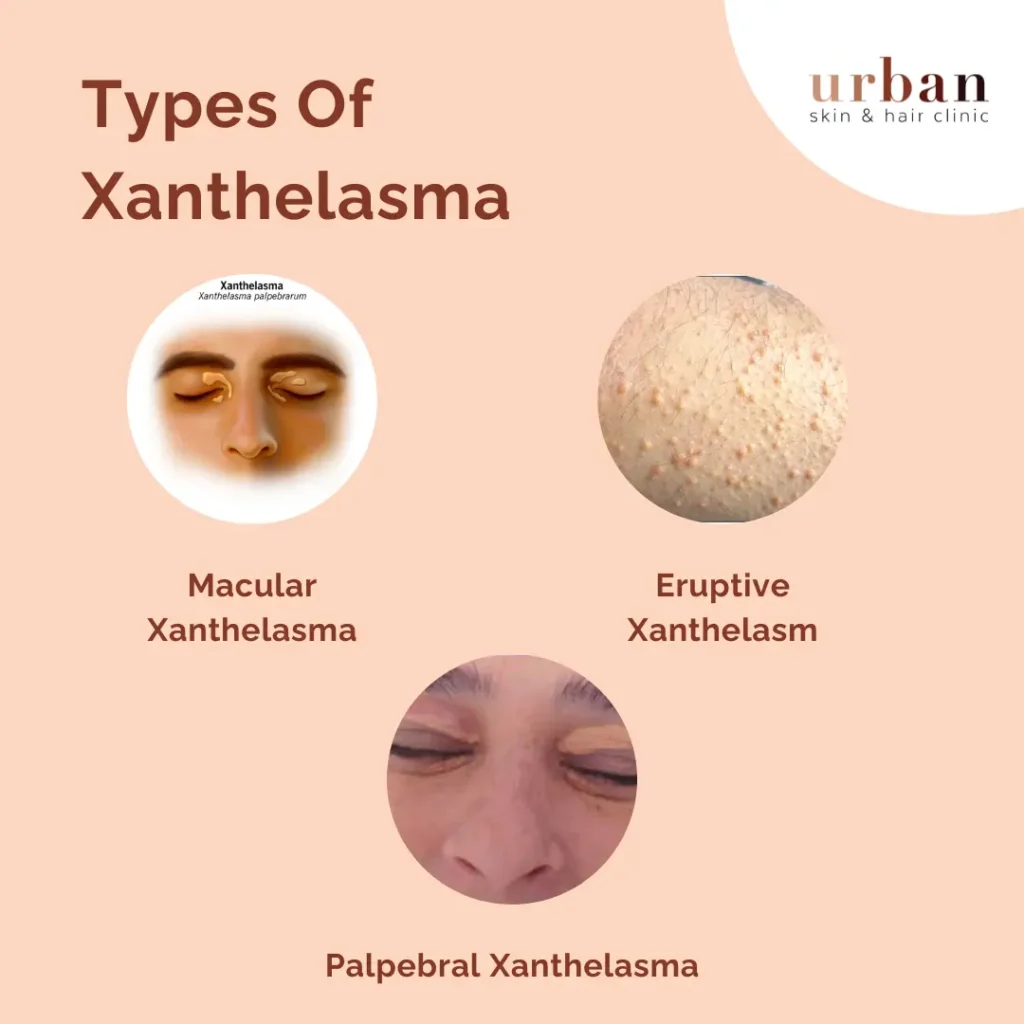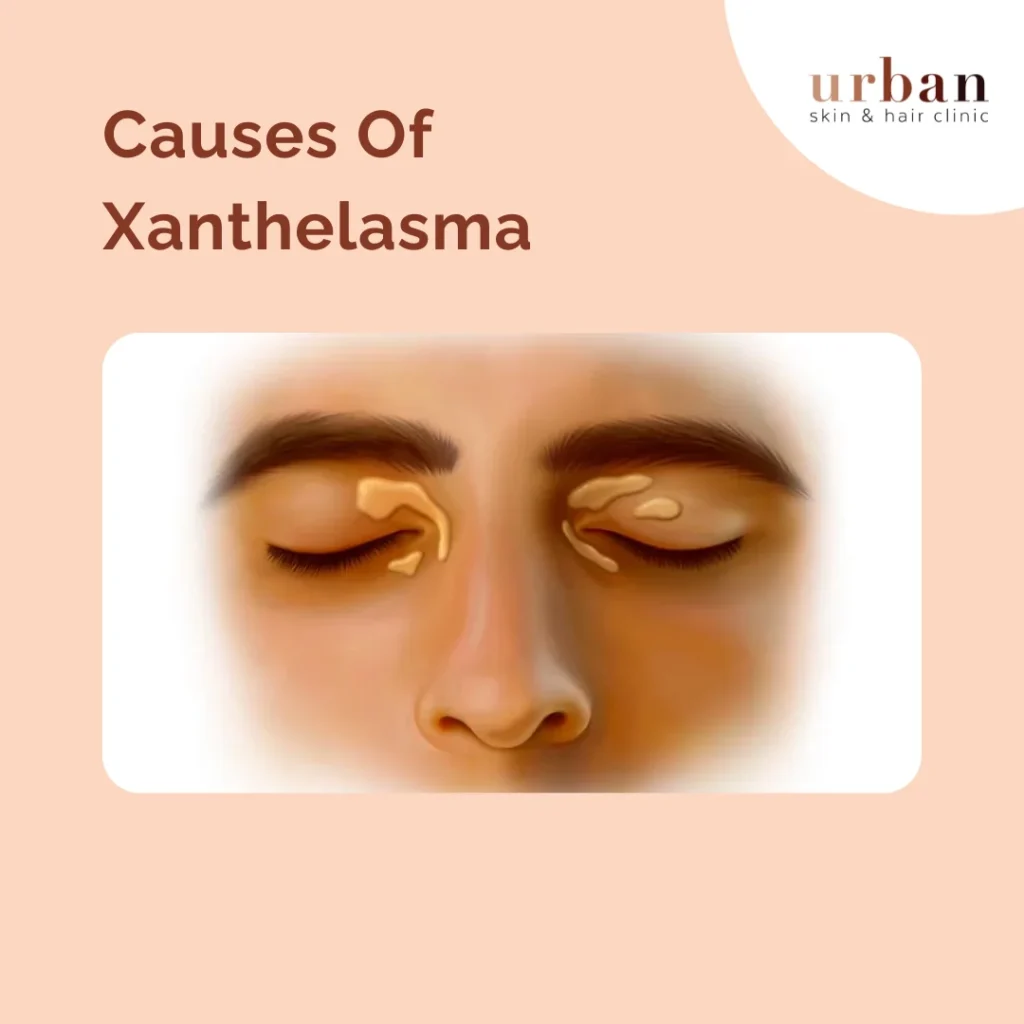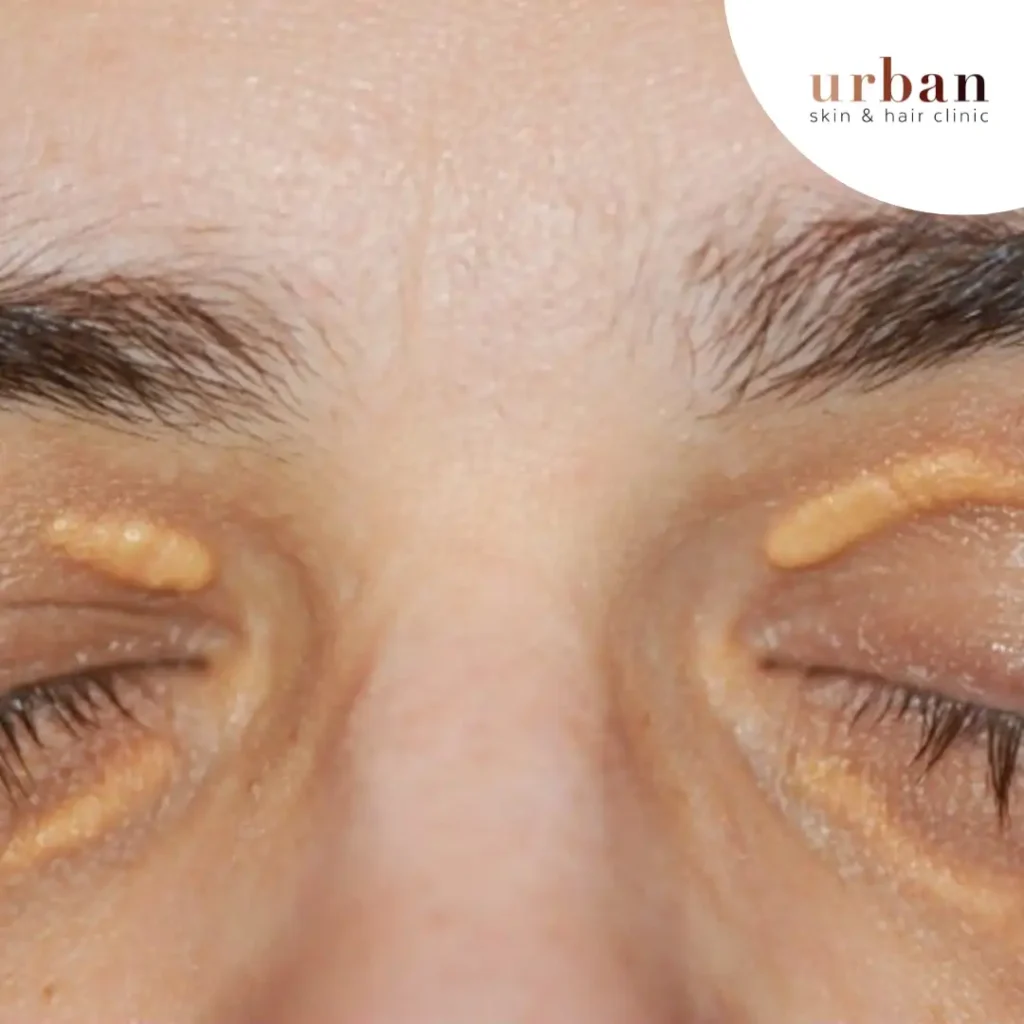
What is Xanthelasma?
Xanthelasma refers to small, yellowish plaques or bumps that develop on the skin around the eyes. These growths are usually painless and appear in the upper or lower eyelid area. Xanthelasma is a type of skin condition categorized as a subtype of xanthomas, which are cholesterol deposits in the skin. While xanthelasma itself is not harmful, it can be aesthetically bothersome and may indicate underlying lipid imbalances or other health concerns.
What are the Types of Xanthelasma?
Xanthelasma can manifest in different forms, primarily based on their appearance and size. The common types include:
- Macular Xanthelasma: These are flat, yellowish patches on the skin around the eyes and are the most prevalent type.
- Eruptive Xanthelasma: As the name suggests, these are small, raised bumps that can occur in clusters.
- Palpebral Xanthelasma: This type specifically affects the eyelids and tends to grow near the inner corners of the eyes.


What are the Causes of Xanthelasma?
Xanthelasma may be caused by:
- Inherited high cholesterol from parents.
- Diabetes mellitus.
- Weight gain or obesity.
- Thyroid issues like hypothyroidism.
- Chronic inflammation.
- Excessive alcohol consumption.
Signs & Symptoms of Xanthelasma
The key characteristic of xanthelasma is the appearance of yellowish patches or bumps on the skin. These growths are soft to the touch and typically do not cause pain or itching. While xanthelasma itself does not impair vision or health, it can be emotionally distressing for individuals concerned about their appearance. In some cases, xanthelasma may be associated with high cholesterol levels or other lipid abnormalities.

Treatment for Xanthelasma
As a premier skin clinic, Urban Skin & Hair Clinic offers a range of effective treatments for xanthelasma. The approach to treatment depends on the severity of the condition and the patient’s preferences. Some of the treatment options include:
This procedure involves freezing the xanthelasma with liquid nitrogen, causing the growth to slough off.
Laser treatment can be used to target and dissolve the cholesterol deposits, leading to the elimination of xanthelasma.
For larger or more persistent xanthelasma, surgical excision may be recommended. This procedure is typically safe and leaves minimal scarring.
It’s important to note that while these treatments can remove existing xanthelasma, lifestyle modifications may also be suggested to address underlying lipid imbalances and reduce the risk of recurrence.
At Urban Skin & Hair Clinic, our experienced dermatologists will assess your condition thoroughly and create a personalized treatment plan to help you achieve clear, healthy skin around the eyes.


